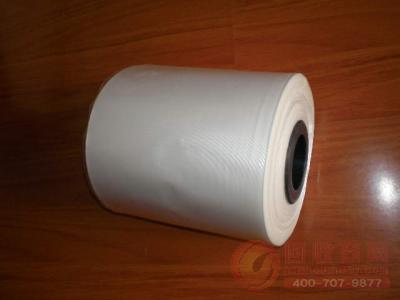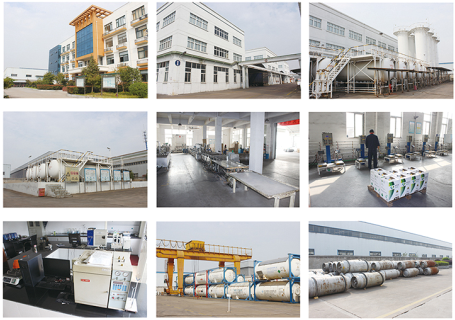As a novel green packaging material, water-soluble plastic packaging film is widely used in the packaging of various products in Europe, America, Japan, etc., such as pesticides, fertilizers, pigments, dyes, detergents, water treatment agents, mineral additives, washing. Agents, concrete additives, chemical reagents for photography, and chemical reagents for horticultural care. Its main features are: 1. Complete degradation, the final products of degradation are CO2 and H2O, which can completely solve the disposal problem of packaging waste; Safe and convenient to use, to avoid direct contact with the packaged object, can be used for packaging of harmful substances in human body; Good mechanical properties, heat sealable, and high heat seal strength; With anti-counterfeiting function, it can be used as the best weapon for anti-counterfeiting of high-quality products, extending the life cycle of quality products. At present, foreign countries mainly produce and sell such products in Japan, the United States, France, etc., like the United States W. T. Company P, C. C. I. P company, France's GREENSOL company and Japan's synthetic chemical company. The domestic Zhuzhou Institute of Technology and Guangdong Zhaoqing Fangxing Packaging Materials Co., Ltd., under the support of the Science and Technology Department of China National Packaging Corporation, jointly developed the water-soluble film and production equipment that has passed the provincial and ministerial level appraisal, and has been put into production, and its products are coming to market. . First, the main chemical composition of water-soluble packaging film and its environmental characteristics 1. The main raw material of chemically-soluble water-soluble packaging film is polyvinyl alcohol with low alcoholysis. It uses polyvinyl alcohol to form film, water and degradability, and various additives such as surfactant, plasticizer and anti-adhesion. Agents, etc. Water-soluble film products are green packaging materials, and are recognized by the national environmental protection authorities in Europe, America, Japan and other countries. At present, biological oxygen consumption (BOD) and chemical oxygen demand (COD) are mainly used as indicators of environmental protection at home and abroad. The Japanese department has determined that the bio-oxygen consumption (BOD) of polyvinyl alcohol is much smaller than that of starch. American Air Products has measured the amount of BOD below 1% of the original BOD after biodegrading airvol PVa products for 5 days. Bio-tests have shown that polyvinyl alcohol is neither toxic nor prevents the growth and reproduction of microorganisms, and has no effect on wastewater treatment and environmental sanitation. The microbial decomposition test of the relevant departments also showed that the polyvinyl alcohol was almost completely decomposed, and the COD was lowered very low. As far as the degradation mechanism is concerned, polyvinyl alcohol has two degradation characteristics of water and organism. Firstly, it is dissolved in water to form a gel solution which penetrates into the soil, which increases the stickiness, gas permeability and water retention of the soil, and is particularly suitable for sand reforming. PVa in the soil can be decomposed by a strain of bacteria, Pseudomonas, which is isolated in the soil. A symbiotic system composed of at least two bacteria can degrade polyvinyl alcohol: one is an active bacteria of polyvinyl alcohol, and the other is a microorganism which produces a substance required for a PVa active bacteria. The oxidation reaction enzyme of the secondary alcohol catalyzes the polyvinyl alcohol, and then the hydrolase cuts off the oxidized PVa backbone, further degrading, and finally degrades to CO2 and H2O. Second, the main performance of water-soluble packaging film 1. The water-soluble film in which the water content is rolled is packaged in PE plastic to maintain its specific moisture content. When the water-soluble film is taken out of the PE package, its water content changes with the environmental humidity, and its performance also changes. 2. The antistatic water-soluble film is an antistatic film which, unlike other plastic films, has good antistatic properties. In the process of packaging a product using a water-soluble film, it is not caused by static electricity and its electrostatic dusting property due to static electricity. 3. Water and gas permeability The water-soluble film has strong permeability to moisture and ammonia, but has good barrier properties against oxygen, nitrogen, hydrogen and carbon dioxide. These characteristics make it possible to maintain the composition and original odor of the packaged product intact. 4. The heat-sealable water-soluble packaging film has good heat-sealing property and is suitable for resistance heat sealing and high-frequency heat sealing. The heat sealing strength is related to temperature, humidity, pressure, time and the like, and is generally greater than 200 g/cm. 5. Mechanical properties Mechanical properties of water-soluble packaging film: elastic modulus 2500 ~ 400kg / cm2, tensile strength 400 ~ 200kg / cm2, tearing force 200 ~ 50kg / cm, elongation 150 ~ 220%. 6. Printing performance Water-soluble film can be clearly printed by ordinary printing methods, and the printing property is good. 7. Oil-resistant and chemical-resistant water-soluble packaging film has good oil resistance (vegetable oil, animal oil, mineral oil), fat, organic solvent and carbohydrate, but strong alkali, strong acid, chlorine free radical and other with PVa Chemical reactions such as borax, boric acid, certain dyes, etc., are not recommended for water-soluble film packaging. 8. The water solubility of the water-soluble water-soluble film is related to its thickness and temperature. For example, a 25 μm thick film has a dissolution time of ≤300 S at 20 ° C, a dissolution time of ≤50 S at 30 ° C, and a dissolution time of ≤30 S at 40 ° C. Third, the application prospects of water-soluble packaging film Water-soluble film has been widely recognized by the developed countries in the world because of its environmentally friendly properties. For example, Japan, the United States, France, etc. have mass-produced and sold such products, like the United States W. T. P company and C. C. I. P company, France's GREENSOL company and Japan's synthetic chemical company, etc., its users are also some famous big companies, such as Bayet (Bayer), Henkel (Henkel), Shell (Shell), agr. Large companies such as Eva have begun to use water-soluble films to package their products. In China, the water-soluble film market is emerging. According to relevant statistics, China needs 20% of plastic film products per year, which is about 309,000 tons. Even if it accounts for 5% of the market, the annual demand will reach 15,000 tons. The current market price: US products are 13 to 170,000 yuan / ton, Japanese products are 20 to 250,000 yuan / ton, domestic products sales price is only 40% of the United States, the average selling price is 60,000 yuan / ton, thus The price is very competitive. With the development and progress of the society, people pay more and more attention to protecting the environment we rely on to survive. In particular, China is about to join the WTO, and it is in line with the developed countries in the world. The environmental protection requirements for packaging are increasing. Therefore, water-soluble packaging film is in China. The application prospects must be very broad.
HCFCs
(hydrochlorofluorocarbons) are the second generation of fluorine based gases,
the original replacements for CFCs.
These products, which include R22, R123, R401A, R401B, R402A, R402B, R408A,
and R409A, are
categorized as having medium ODP (Ozone Depletion Potential) and
medium to high GWP (Global Warming Potential). Consequently, they offer a
slightly more environmentally friendly alternative to CFCs. They also often
provide a quick and simple "retrofit"
of existing CFC equipment.
As
HCFCs contribute both to ozone depletion and global warming, the use of HCFCs
is being phased out as
part of global legislation, such as the Montreal
Protocol. Some countries and regions are operating
an accelerated phase out.
Zhejiang
Zhonglan Refrigerants Co.,Ltd sell a wide range of HCFC products
like R22, R141b,R142b in many locations and in a variety of packages including
cylinders, drum tanks and iso-tank supplies. This includes reclaimed HCFCs
in some locations. We also support the transition away from the use
of ozone depleting products and can offer advice on alternative products,
such as hydrofluorocarbons (HFCs) and natural refrigerants, which
have a lower impact on the environment.
Our factories passed ISO9001:2008,
ISO14001:2004 and TS16949:2009. With scientific enterprise development,
advanced production technology, solid technical assistance, overall quality
assurance, excellent sales team, UISZL brand wins better and better reputation
in the domestic and overseas market, and the turnover is higher and higher. We
not only provide high quality products, but also the better and better service.
A/C Hcfc Refrigerants,HCFC Refrigerant Gas,R134A Alternative,R134A Retrofitted Refrigerant Gas ZHEJIANG ZHONGLAN REFRIGERATION TECHNOLOGY CO.,LTD , https://www.uiszl.com

